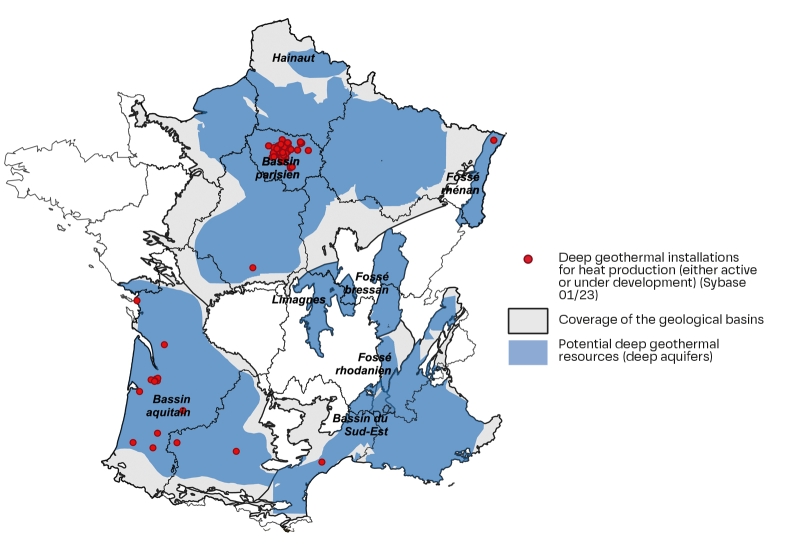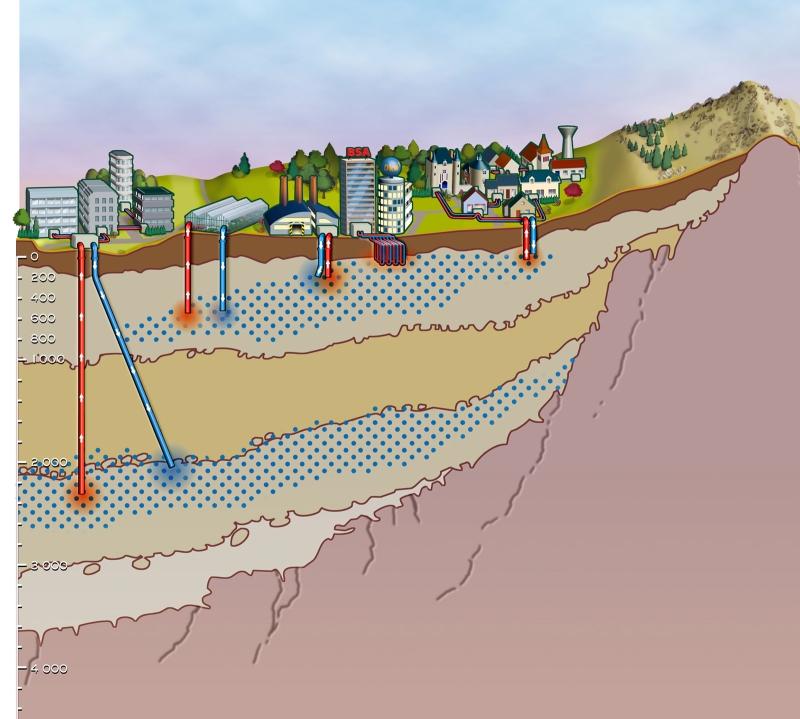Deep geothermal installations for heat production (either active or under development). © BRGM
Subsurface potential for the energy transition
Outstanding result / Accelerating the development of near-surface and deep geothermal energy
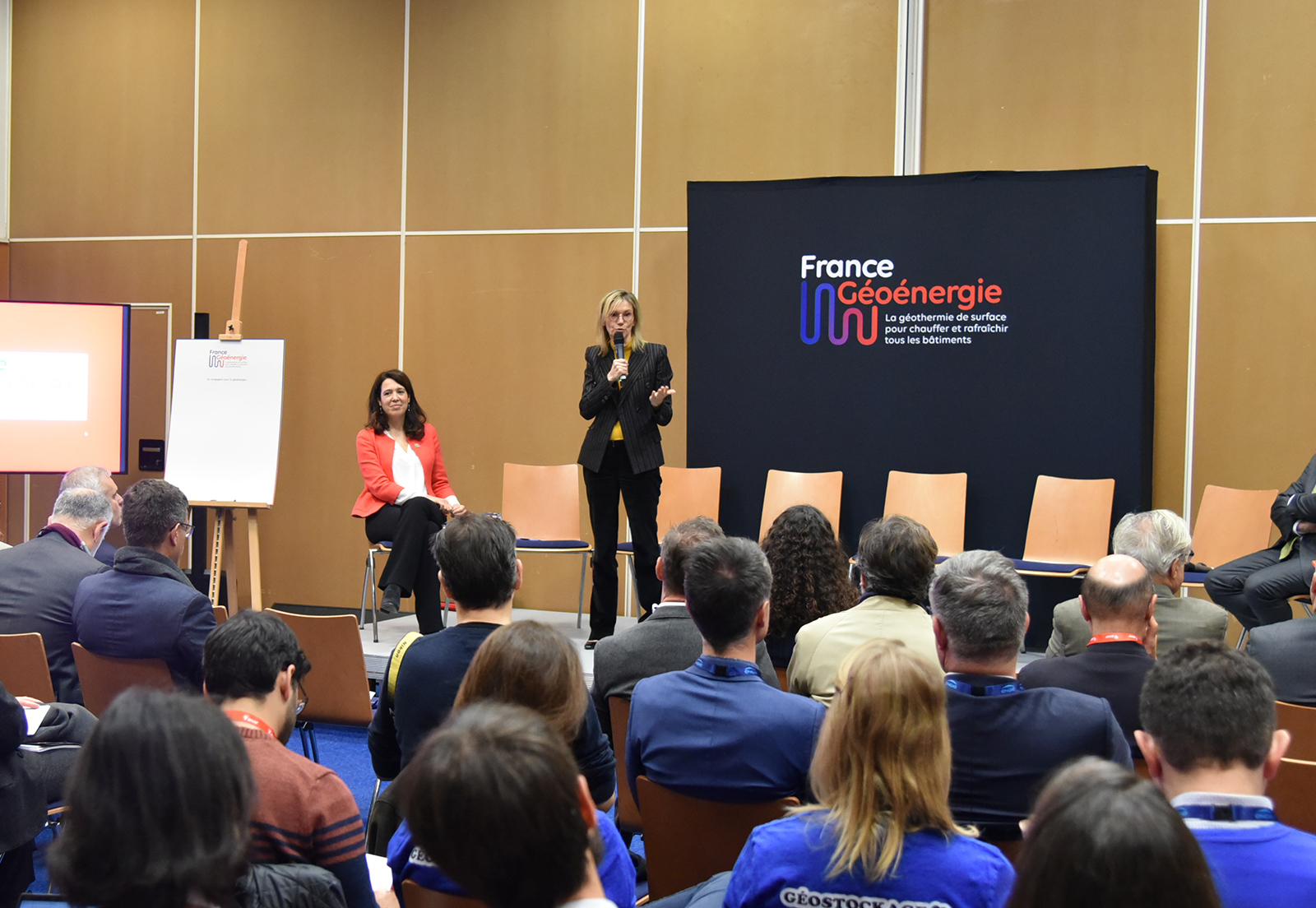
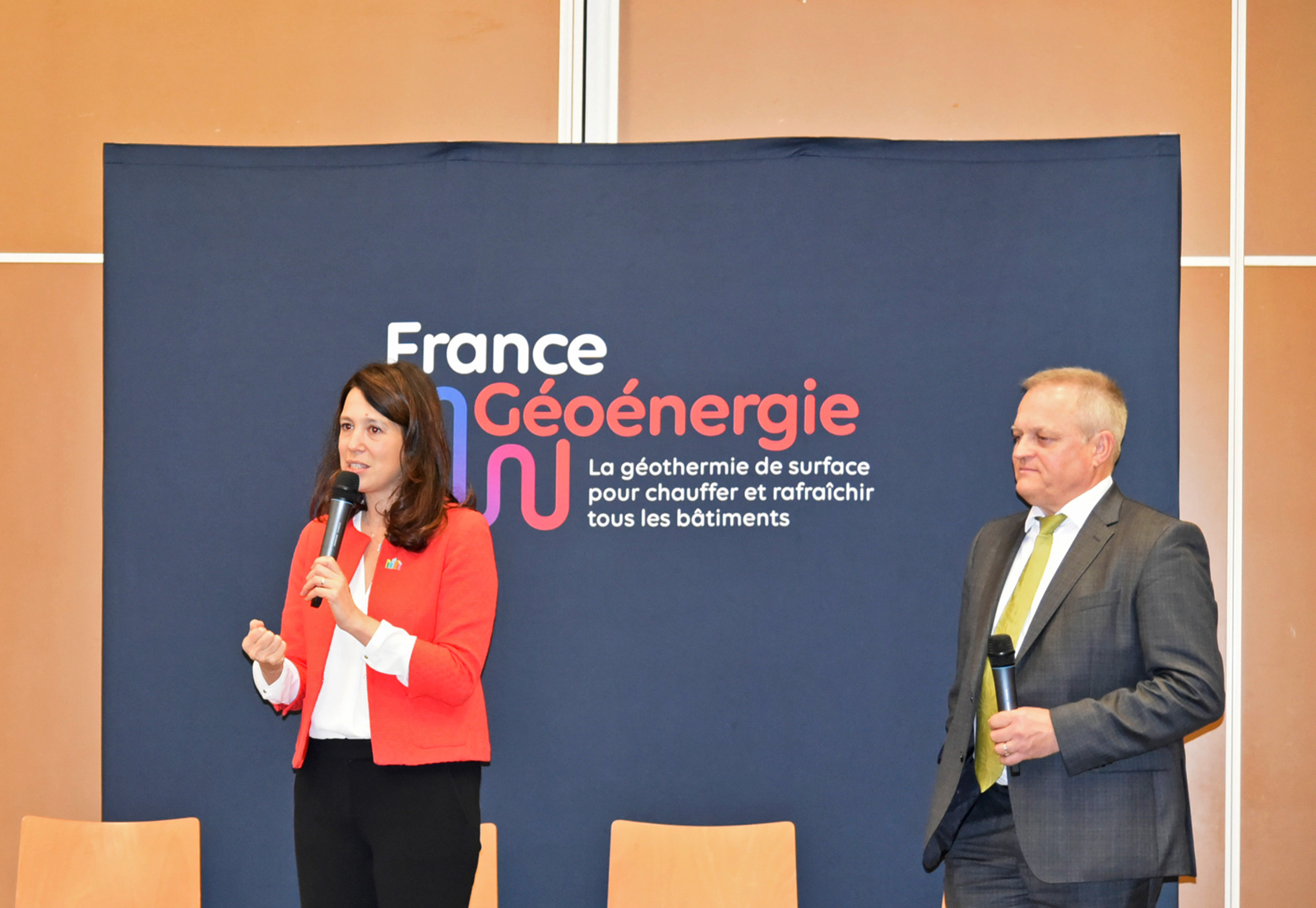
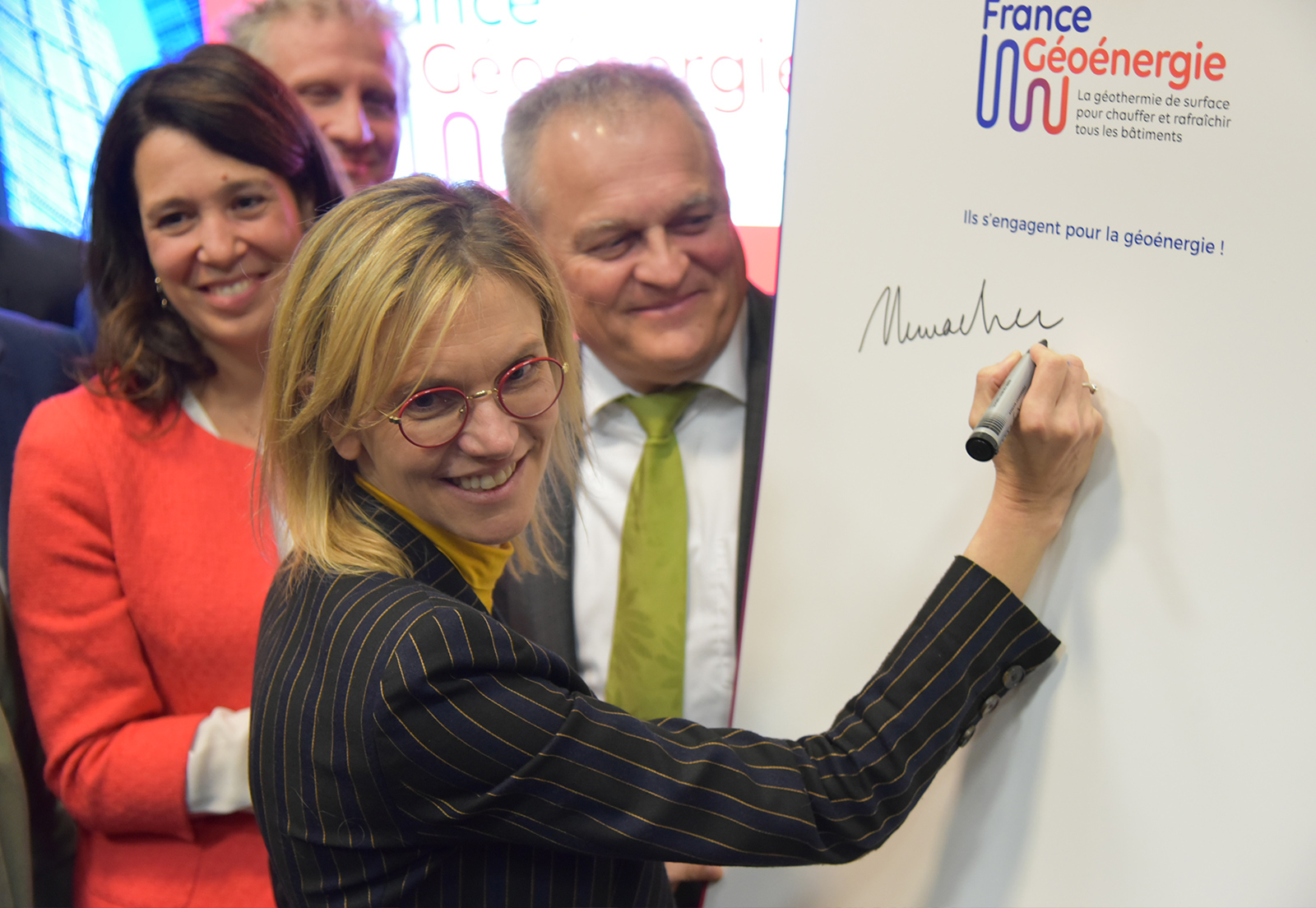
Near-surface geothermal energy is available across more than 90% of France and could cover at least 70% of the heating needs for buildings or processes. However, it accounts for only 1% of the heat produced today in France! Its large-scale deployment across every region would generate around 90 TWh of power per annum, within 20 years. An additional 10 TWh could be produced within the same time-frame, by exploiting deep geothermal resources to supply energy for urban heating networks, in particular. Clearly, this is an effective solution for replacing fossil fuels (which are mainly imported) with a non-polluting energy source that does not emit greenhouse gases and which is, above all, local and not affected by price fluctuations on the traditional markets, thereby increasing the country’s energy sovereignty.
For a long time now, BRGM has sought to promote the deployment of geothermal energy in France. The logic behind this has been further reinforced by the unprecedented and unstable energy context linked to the Russia-Ukrain war, which has been going on for over a year now. BRGM’s goals in this regard are now supported by the French Government’s strategy to accelerate the deployment of geothermal energy as part of its policy to develop renewable energies. This strategy was highlighted during the presentation of an action plan by Agnès Pannier-Runacher, the Minister for Energy Transition, on 2 February 2023. BRGM has a major role to play in implementing of this plan.
A decision-making support tool to promote the widespread deployment of near-surface geothermal energy
The action plan aims to double the number of geothermal heat pumps installed every year in private homes (currently about 3,000/year) by 2025. With this in mind, BRGM suggested developing a “geothermal cadastre” (land registry map of geothermal potential), based on the model of the solar cadastre. “It will display the geothermal energy rating of a plot of land so that people can assess the performance potential, with a confidence index indicating the quality of local knowledge and data about the subsurface,” explains Mikaël Philippe. To do this, BRGM will draw on all the data at its disposal, in particular the results of thermal response tests, which provide information about the ground’s thermal conductivity.
“The geothermal cadastre, which will focus on the use of geothermal probes at a depth of less than 200 metres, is intended to help local authorities develop near-surface geothermal energy in their area. The tool will also be made available to France Rénov – the public housing-renovation service – to help orient users towards this solution, which can heat or cool any type of building, while reducing CO2 emissions by up to 90% and energy consumption by 75% compared to gas,” explains Mikaël Philippe.
The geothermal cadastre is a valuable decision-making aid that will spearhead the promotion of near-surface geothermal energy among the general public. The market is highly promising: some 8 million individual family homes are currently heated with gas or oil and are potential candidates for a geothermal heating solution when replacing their boilers.
Underground exploration to develop deep geothermal energy in new areas
Another way to develop the use of this type of renewable energy is by exploiting deep geothermal energy in aquifers, up to a depth of 2,000 metres, in general. Currently, this type of energy system is mainly used in the Paris Basin, with some fifty heating networks in the Île-de-France region drawing heat primarily from the Dogger aquifer. However, this type of energy can be developed in many other metropolitan areas (see map). The government’s action plan aims to increase the number of deep geothermal projects by 40% by 2030.
Once again, BRGM is at the helm. “We are planning to establish a nationwide geothermal inventory to fine-tune our knowledge about potential deep geothermal targets,” says Mikael Philippe. “All the available data will be re-analysed in order to better characterise the geothermal resources. At the same time, new geophysical campaigns will be carried out to study the subsurface at local levels, starting with two sectors of particular interest, which were determined in conjunction with ADEME and geothermal professionals: the western part of the Paris Basin and the Vitrolles-Marignane area, which currently has no geothermal installations!” This pro-active approach will accompany changes in the conditions for the allocation of the State Guarantee Fund, intended to provide compensation in the event the drilling operations fail. “We want to encourage project owners to initiate deep geothermal projects while minimising the associated risks.”
Diagram showing the different existing geothermal solutions and their uses. © Connexités




